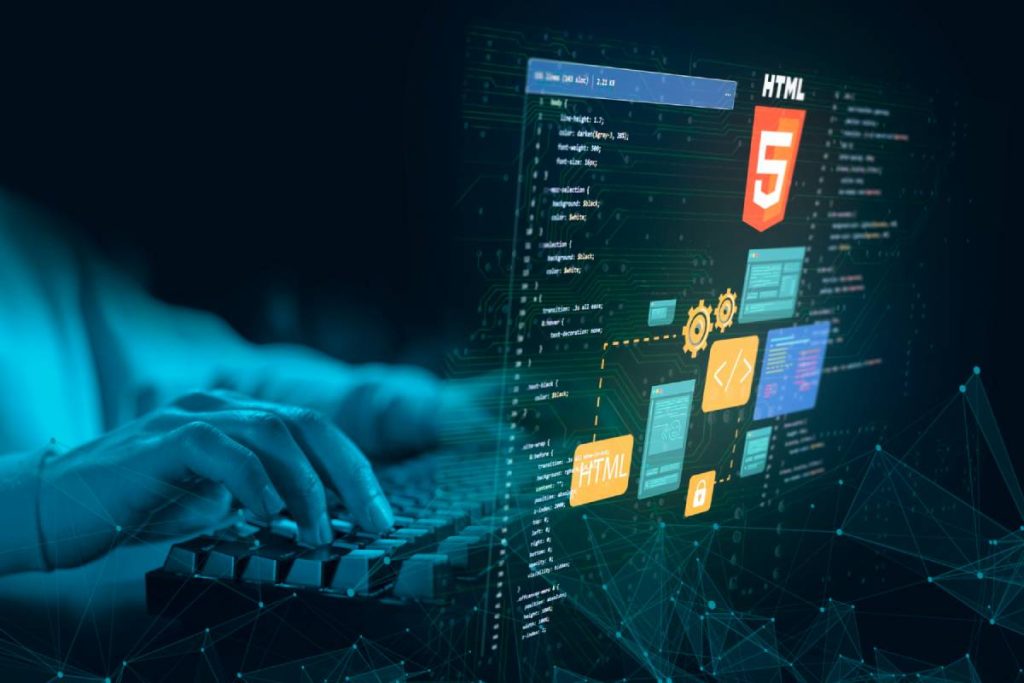The Rise of Artificial Intelligence in Software Development
In 2025, artificial intelligence (AI) will continue to dominate the software development landscape. AI-powered tools and algorithms are revolutionizing the way software is created, optimized, and tested. Machine learning models are now being used to predict user behavior, optimize performance, and improve user interfaces in real time. This transformation allows developers to create more intuitive, adaptive, and efficient software solutions that can anticipate and respond to users’ needs without manual intervention. The integration of AI into development processes also reduces the time spent on repetitive tasks like debugging and optimizing code, ultimately speeding up development cycles and improving the quality of the final product.
Cloud-Native Development: A Shift Toward Scalability and Flexibility
As businesses increasingly move toward digital transformation, cloud-native development will remain a core focus in 2025. The demand for scalable and flexible solutions continues to rise, and cloud-native development enables developers to build applications that are more agile and resilient. By leveraging cloud platforms like AWS, Azure, and Google Cloud, developers can create software that automatically scales based on user demand and ensures high availability. Additionally, cloud-native development makes it easier for teams to collaborate, share resources, and deploy updates seamlessly, improving operational efficiency. The growing adoption of microservices and containerization also supports the development of modular, maintainable software that can adapt to changing business needs.
Low-Code and No-Code Development Tools
Another key trend in software development in 2025 is the rise of low-code and no-code development platforms. These platforms empower non-developers and business analysts to create applications with minimal coding expertise. By offering pre-built templates, drag-and-drop interfaces, and automated workflows, low-code and no-code platforms simplify the development process, making it accessible to a broader audience. While these tools are not designed to replace professional developers, they significantly accelerate the development cycle, allowing businesses to build and deploy software quickly. As the demand for faster solutions continues to grow, low-code and no-code development will play an essential role in increasing productivity and empowering organizations to innovate more rapidly.
Edge Computing: Bringing Software Closer to the User
As the Internet of Things (IoT) and real-time applications grow, edge computing will become increasingly important for software developers in 2025. By processing data closer to the user, edge computing reduces latency and enhances performance, particularly for applications that require real-time responses, such as gaming, autonomous vehicles, and smart cities. With edge devices like smartphones, wearables, and IoT sensors handling processing locally, businesses can provide more responsive software experiences without relying on distant data centers. The growing reliance on edge computing will push developers to rethink traditional server-based architectures and focus on distributed systems that bring computing power closer to the source of the data.
Blockchain Integration for Secure Software Solutions
In 2025, the integration of blockchain technology into software development will continue to grow. Blockchain offers a decentralized and secure way of storing and verifying transactions, which is especially important in industries like finance, healthcare, and supply chain management. Software developers are increasingly integrating blockchain into their applications to enhance data security, reduce fraud, and provide transparency in transactions. By leveraging smart contracts and decentralized ledgers, businesses can build trust with customers while ensuring that sensitive data remains secure. As blockchain technology becomes more accessible, it will likely become a standard feature in many software solutions across industries.
DevOps and Continuous Integration/Continuous Deployment (CI/CD)
DevOps practices and CI/CD pipelines are becoming increasingly integral to software development processes in 2025. DevOps focuses on fostering collaboration between development and operations teams, streamlining workflows, and automating processes to accelerate software delivery. The implementation of CI/CD allows for continuous integration and continuous deployment, enabling developers to release software updates more frequently and with greater confidence. Automated testing, code quality checks, and version control systems ensure that new features are delivered with minimal risk of bugs or performance issues. As the demand for faster, more reliable software increases, DevOps and CI/CD will remain critical for improving the efficiency and reliability of development cycles.
Cybersecurity: A Top Priority for Software Development
As cyber threats continue to evolve, cybersecurity will remain a top priority in software development throughout 2025. Developers will be expected to build security features into every stage of the software development lifecycle, from design to deployment. With increasing concerns over data breaches, ransomware, and other malicious attacks, integrating robust security measures such as encryption, multi-factor authentication, and secure APIs into software applications is essential. The growing importance of privacy and data protection regulations like GDPR will also push developers to prioritize compliance and safeguard user data. As cybersecurity becomes more complex, the role of security-first development will be critical in ensuring that software remains safe and secure in an increasingly connected world.
Conclusion
The software development landscape in 2025 is shaped by technological advancements, evolving user expectations, and increasing demands for security, scalability, and efficiency. From AI-powered development tools and cloud-native applications to low-code platforms and edge computing, developers are being equipped with powerful tools that will enable them to create more innovative and efficient solutions. As the industry embraces blockchain, DevOps practices, and cybersecurity, it is clear that the future of software development will be defined by the integration of cutting-edge technologies that enhance the user experience and meet the needs of businesses worldwide. Keeping up with these trends will be essential for developers and companies seeking to remain competitive in the fast-paced, ever-evolving tech industry.



